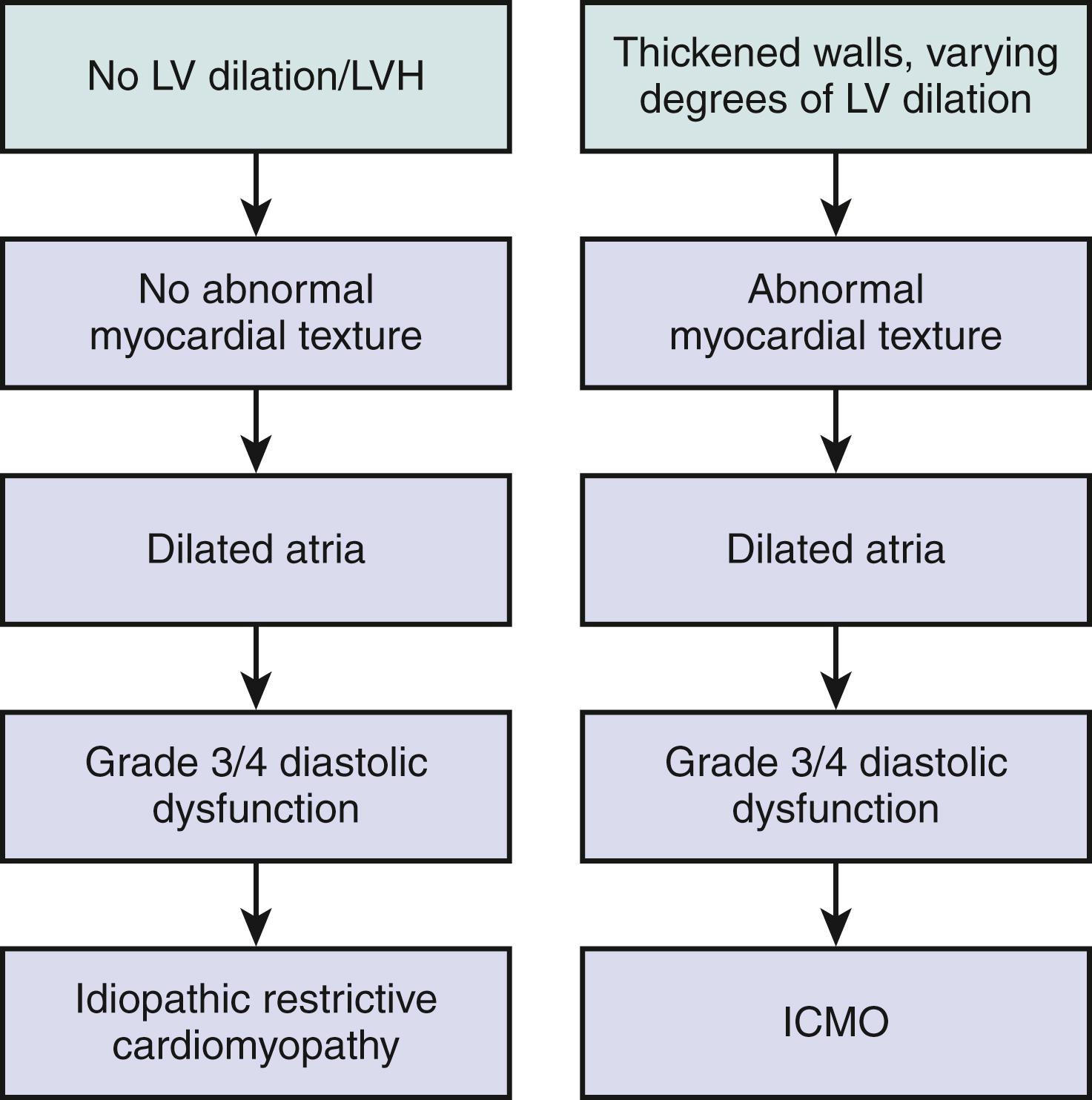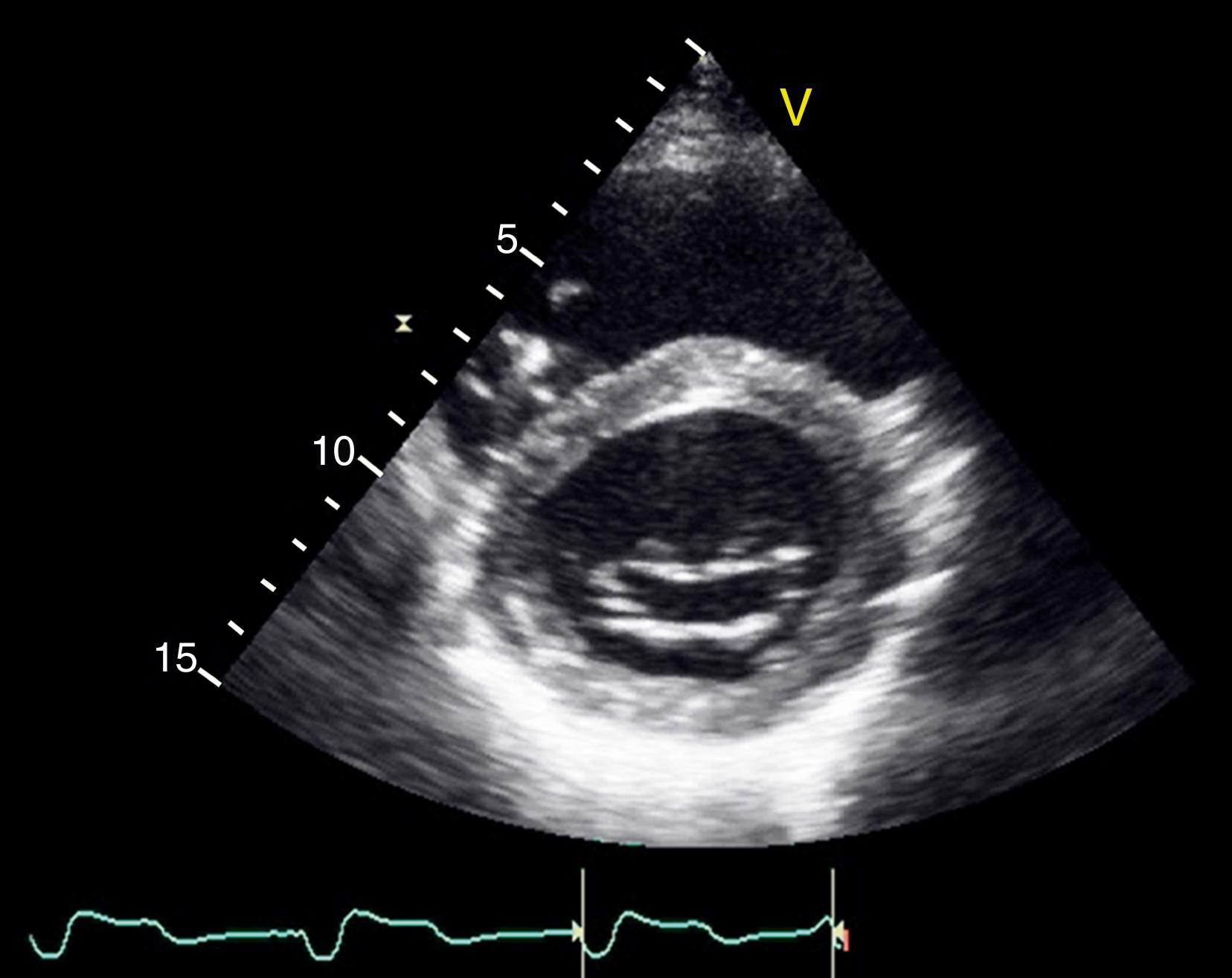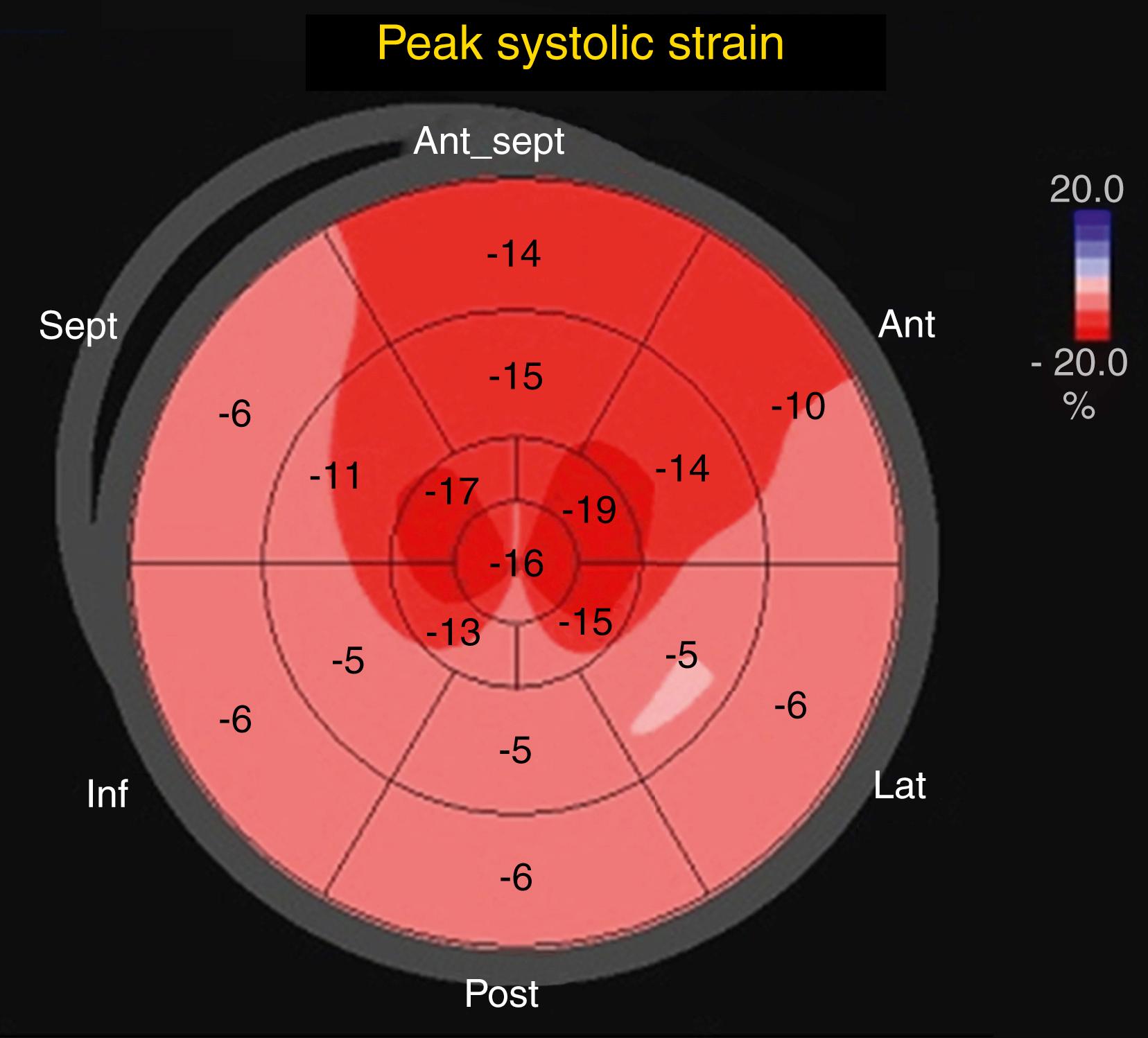Physical Address
304 North Cardinal St.
Dorchester Center, MA 02124
Infiltrative cardiomyopathies (ICMOs) are a form of restrictive cardiomyopathy that may be caused by either hereditary or acquired diseases. They are characterized by the deposition of abnormal substances within the myocardium that cause stiffening of the left ventricular (LV) walls. These disorders can be caused by conditions that cause abnormal substances to deposit within the myocyte, referred to as storage disorders, or abnormal deposition of substances within the interstitium ( Table 71.1 ). The 2006 American College of Cardiology/American Heart Association guidelines state that conditions that cause ICMO may be classified as diseases of either hereditary or mixed pathology. The purpose of this chapter is to accentuate the salient features of ICMO and highlight some conditions that manifest as ICMO. Some of these disorders are elaborated upon in greater detail in other parts of this book.
| Storage Disorders | Infiltrative Disorders |
|---|---|
| Fabry disease | Amyloid |
| Glycogen storage diseases | Sarcoid |
| Hemochromatosis | Hurler syndrome |
| Danon disease | Gaucher disease |
| Oxalosis |
ICMOs are characterized by noncompliant LV walls that impede normal diastolic filling. Thus, varying degrees of diastolic dysfunction can occur, with the classic presentation being that of heart failure with a preserved ejection fraction (EF) accompanied by severe restrictive diastolic dysfunction, biatrial enlargement, and often pulmonary hypertension. In some instances of more advanced disease, significant impairment of the EF occurs. There is a diverse spectrum of phenotypic manifestations, ranging from left ventricles with small-volume cavities associated with markedly thickened walls to dilated thin-walled dysfunctional ventricles. ICMOs can be differentiated from idiopathic restrictive cardiomyopathy despite some similar clinical and echo-Doppler features ( Fig. 71.1 ).

When hereditary disorders are suspected, a detailed family history with a third-generation pedigree should be obtained. This information must be integrated with the ethnic background and age of the patient because certain disorders are more common in certain populations. In both hereditary and acquired disorders, detailed systemic evaluation is of paramount importance, particularly of the neurologic, renal, and reticuloendothelial systems.
The electrocardiogram (ECG) has traditionally been an important diagnostic tool to ascertain the presence of ICMO. A discrepancy of low QRS voltages and thickened myocardial walls has traditionally been suggestive of ICMO, with amyloidosis being the most common and widely studied condition. However, the sensitivity and specificity for this combination vary greatly. Currently, this model is inadequate because many patients with ICMO can have thick or thin walls, variable QRS voltages, and either a normal or an abnormal EF.
The provisional diagnosis can be narrowed down considerably by integrating data from the clinical evaluation, ECG findings, and the use of multimodality imaging (echocardiography and cardiac magnetic resonance imaging [CMRI]). This can be diagnostic if accompanied by an abnormality in the appropriate biochemical or disease markers. Tissue diagnosis may still be needed, and thus, cardiac biopsy remains the gold standard to provide an accurate diagnosis.
The role of echocardiography is to exclude other pathophysiologic states that simulate the clinical presentation at hand, to assess the anatomy and the function of the cardiac chambers of patients with ICMO, and to provide clues to the diagnosis of the underlying cause. The first step involves a thorough evaluation of the regional anatomy of the left ventricle focusing on identifying wall hypertrophy, wall motion abnormality, and the presence of altered myocardial texture or speckling. The latter has also been termed “sparkling or granular myocardium” ( Fig. 71.2 and ![]() ); the term “speckling” will be used in this text. At the outset, it is imperative for the echocardiographer to avoid several pitfalls related to inappropriate gain settings and tissue harmonic imaging that may cause inaccurate diagnosis of speckling. Most reports in the literature of increased echogenicity of the myocardium with speckling refer to ICMO, in particular, amyloid, but this pattern may also uncommonly occur in LV hypertrophy (LVH). Using the 17-segment model of the American Society of Echocardiography as the basis of analysis from multiple views provides a comprehensive assessment of the three key features.
); the term “speckling” will be used in this text. At the outset, it is imperative for the echocardiographer to avoid several pitfalls related to inappropriate gain settings and tissue harmonic imaging that may cause inaccurate diagnosis of speckling. Most reports in the literature of increased echogenicity of the myocardium with speckling refer to ICMO, in particular, amyloid, but this pattern may also uncommonly occur in LV hypertrophy (LVH). Using the 17-segment model of the American Society of Echocardiography as the basis of analysis from multiple views provides a comprehensive assessment of the three key features.

Video 71.2 . Parasternal long-axis view of a patient with Gaucher disease depicting speckling of the basal anterior septum and areas of the basal inferolateral wall.
Assessment of the EF and diastolic function is the next step. In most instances, the EF is preserved early on, whereas a restrictive filling pattern (grade 3 diastolic dysfunction) is present. These findings are associated with marked dilatation of the atria and pulmonary hypertension. As opposed to the hemodynamics of constrictive pericarditis, interrogation of mitral and tricuspid inflow velocities using pulsed-wave Doppler reveals no marked expiratory or inspiratory increment in velocities, whereas hepatic vein Doppler reveals an increment in the atrial reversal wave with inspiration and not with expiration. , Tissue Doppler imaging of the mitral annulus depicts a depressed E′, in keeping with abnormal myocardial relaxation. , Furthermore, the medial E′ is usually less than the lateral E′, unlike constrictive pericarditis. Using both the calculated E/E′ ratio and the left atrial volume index provides insight into acute and chronic filling pressures. A careful interrogation of these important echocardiographic features aids in differentiating restrictive cardiomyopathy from constrictive pericarditis, which is the most frequent clinical scenario that mimics these hemodynamics. LV systolic function, as estimated by the EF, is usually normal until the late stages of disease progression.
This technique has emerged as a robust technique to assess regional and global myocardial mechanics. It has been applied to several conditions; cardiac amyloidosis is the most common condition. The most important clinical caveat is that although most patients with ICMOs have normal EFs, it does not imply that they have normal systolic function. Impairment of longitudinal function, both regionally and globally, is often found despite a normal EF ( Fig. 71.3 ). These techniques may detect an abnormality before overt phenotypic or functional abnormalities on echocardiography and thus may detect subclinical hereditary ICMO or even cardiac involvement in systemic disease.

Another possible application for this technique is that the site and distribution of pathological involvement in different ICMOs vary, and therefore, varying patterns of abnormal mechanics can occur. Apical sparing is a pattern of regional differences in deformation; longitudinal strain in the basal and middle segments of the left ventricle is more severely impaired compared with strain values in apical segments. Phelan and coworkers were the first to demonstrate the clinical relevance of this strain pattern in patients with cardiac amyloidosis. In their study, apical sparing differentiated cardiac amyloidosis from other causes of LVH with high sensitivity and specificity. This apical-sparing pattern was also described recently with oxalosis. Liu and coworkers used the ratio of systolic longitudinal strain at the apex to systolic longitudinal strain measured at the base in combination with deceleration time to accurately differentiate cardiac amyloid from hypertension and Fabry disease.
The CMRI technique has superior spatial resolution to echocardiography and is the gold standard for establishing information on ventricular volumes, mass, and EF. Its most important use is in detecting the presence and anatomical extent of late gadolinium enhancement (LGE) within the myocardium. Gadolinium causes magnetic hyperenhancement in conditions in which extracellular space is expanded (e.g., myocyte necrosis, myocardial edema, scar formation, and protein infiltration). The pattern of LGE may suggest a potential diagnosis ( Table 71.2 ).
| Disease | Cardiac Magnetic Resonance Abnormality |
|---|---|
| Amyloid | Patchy focal or global subendocardial LGE |
| Sarcoid | Patchy subendocardial, midmyocardial, or subepicardial LGE |
| Fabry disease | Patchy basolateral subepicardial or midmyocardial LGE Reduced noncontrast myocardial T1 values |
| Danon disease | Subendocardial LGE |
| Hemochromatosis | Reduced T2 values |
Become a Clinical Tree membership for Full access and enjoy Unlimited articles
If you are a member. Log in here